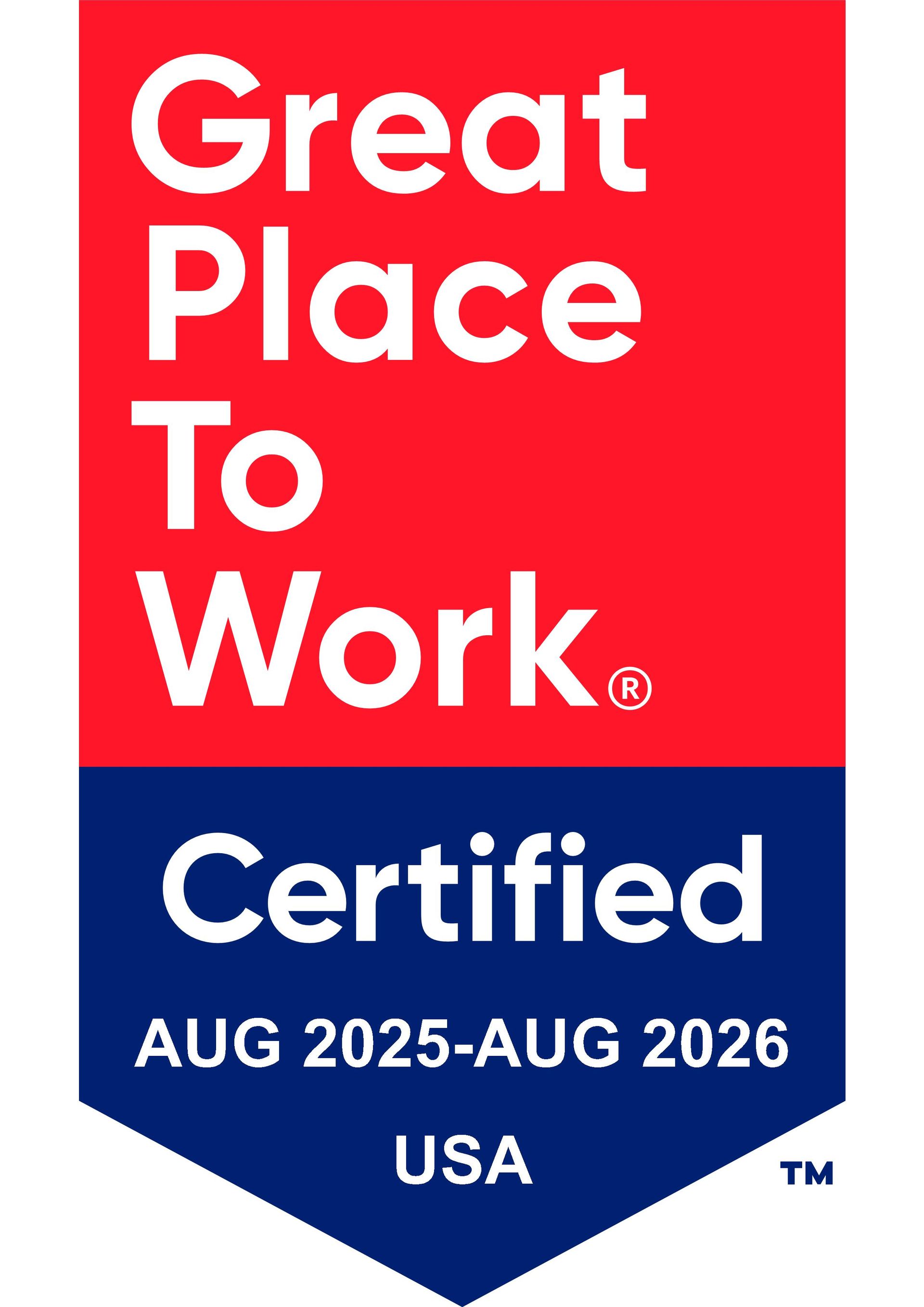
What Are Fringe Benefits? Tips to Attract, Retain, & Inspire Talent
11 January 2023

Employees want to work for employers that offer a solid benefits package. Many individuals would even choose to work for a company for less pay if they had better benefits. Bamboo HR reported that better benefits were one of the top five reasons employees left companies in 2022, and 21% of applicants would leave their current job for another job offer with better benefits. Therefore, in today’s competitive labor market, where many industries are facing a shortage of qualified candidates to fill their open positions, employers must offer an extraordinary fringe benefits package in addition to their compensation package.
What Are Fringe Benefits?
Fringe benefits are any benefit an employer offers its employees outside of a standard compensation package that’s typically comprised of base pay and bonuses. Often, an employer offers the same fringe benefits to all full-time employees. In some instances, however, certain fringe benefits may also be granted to part-time employees, and some might only be granted to employees within certain positions or at a certain level of the organization, such as the executive level.
Types of Fringe Benefits
Many fringe benefits are offered to support overall job satisfaction and reduce dissatisfaction and others are offered to compensate employees for expenses incurred out of necessity for doing one’s job. For example, health insurance is expected by employees, so not having it as an option would increase dissatisfaction, while offering it simply keeps the status quo, though doesn’t necessarily increase satisfaction. Offering benefits, like flex time or additional paid time off, isn’t a requirement or offered by all employers, so when it’s offered, it tends to increase employee satisfaction.
Several fringe benefits offered are standard and offered as part of one’s employment, like medical insurance, dental insurance, disability insurance, life insurance, cafeteria subsidies, employee discounts, tuition reimbursement, and the use of a company vehicle. Fringe benefits that aren’t as common—though many are becoming more common in today’s competitive market—include pet-friendly workplaces, on-site sports and workout facilities, free fitness classes, pet insurance, free commuter services, paid maternity leave, on-site childcare centers, and free on-site meals.
Cafeteria Plans and Fringe Benefits
When an employer offers a suite of benefits to employees that they can choose from, similar to an individual selecting food from a cafeteria menu, it’s referred to as a cafeteria plan. Some of these types of fringe benefits are on a pre-tax dollar basis, including retirement benefits, life insurance, health savings accounts, and health insurance plans.
Fringe Benefit Taxation Rules
Fringe benefits are taxable unless they conform to the IRS rules for exemption. Taxable fringe benefits must be included on one’s federal tax return as taxable income for the tax year based on its fair market value or the retail amount the individual would pay for the same benefit. For employer-provided vehicles, the fair market value is generally the amount an individual would need to pay a third party to “lease the same or similar vehicle on the same or comparable terms in the geographic area where the employee uses the vehicle.” A cents-per-mile rule is permissible instead of fair market value if certain criteria are met.
If a fringe benefit does fall under the IRS exemption list, it doesn’t necessarily mean the entire value of the benefit received is exempt. For example, fringe benefits that are considered working condition benefits are only exempt to the extent they were used for work-related use and only taxable to the extent they were used for personal use.
Let’s say an employee is provided with a smartphone. The taxable income would be the percentage of time dedicated to it being used for personal use. So, if the smartphone is used 40% of the time for personal use and 60% of the time for business use, then 40% of the fair market value of the smartphone is taxable and should be included on your federal tax return as income.
The IRS publishes its Employer’s Tax Guide to Fringe Benefits that outlines which benefits qualify as exemptions. The list includes:
• Accident and health benefits
• Achievement awards (up to $1,600 for qualified awards)
• Adoption assistance
• Athletic facilities
• Commuting benefits
• De minimis (minimal) benefits
• Dependent care assistance
• Educational assistance (up to $5,250 per year)
• Employee discounts
• Employee stock options
• Employer-provided cell phones
• Group-term life insurance coverage
• Health savings accounts (HSA)
• Lodgings on your business premises
• Meals
• No-additional-cost services
• Retirement planning services
• Transportation (Commuting) Benefits
• Tuition reduction
• Working conditions benefits
The majority of fringe benefits that are income tax-exempt are also exempt from Medicare, Social Security, and federal unemployment taxes.
Additional Exemption Considerations
Each type of exemption has its own rules and conditions that need to be met, and different types of employers have a specific set of rules to qualify for the exemptions. Most of the time, employee prizes or awards given to them by their employer are taxable, which is always the case for cash awards.
Achievement awards are an example of exempt employee awards. However, they are only exempted up to $400 for non-qualified plan awards and up to $1,600 for qualified plan awards. The award cannot be in the form of meals, vacations, sporting events or theatre tickets, lodging, cash, cash equivalents, bonds, stocks, or any other type of security. A tangible award, like a tablet or set of golf clubs, would fall under the tax exclusion up to the value amount allowed. Qualified plans are those that are available to all employees and not solely highly paid employees.
Aside from achievement awards, fringe benefits that are offered to highly paid employees only are taxable—they do not fall under the tax-exempt rule—including dependent care assistance, adoption assistance, and employee discounts.
Tips to Attract, Retain, and Inspire with Fringe Benefits
Research shows that if organizations want to attract and retain top talent, they need to step up their benefits strategy. To do so in your organization:
Know the research: What benefits are being offered by your competitors that are attracting talent?
What does the research say about what employees are seeking? Health insurance, dental insurance, vision insurance, and retirement benefits are still top priority for employees when it comes to necessary employer-sponsored benefits. In addition, employee rewards, employee performance bonuses, flexible working arrangements, mental health services, paid vacation, and increased paid time off are the types of benefits employees appreciate and prioritize these days.
According to research by Buck Consulting, the top 10 fasting growing voluntary benefits being offered include:
1. Hospital indemnity insurance
2. Personal loans
3. Financial coaching/planning
4. Caregiving
5. Critical illness insurance
6. Discount Marketplace
7. Pet insurance
8. Health accident insurance
9. Auto/Home Insurance
10. Long-term care insurance
Ask your employees: To better understand what your employees desire regarding fringe benefits, ask them. Ask what’s working for them, which benefits they wish they had, which ones they love, and so on. It’s also a good step to conduct exit interviews and inquire about the employee’s satisfaction with their benefits while they were employed with you.
Educate your employees: If your employees don’t know or understand the benefits available to them, you and the employee could be missing out. Employees often report they don’t understand their benefits fully and 45% indicated they wished they had a better understanding of them.
Promote your employee benefits platform: In addition to ensuring your internal employees are aware of the benefits available to them, you want to advertise your benefits, especially those that set you apart, in your job postings, on social media, and more.
Key Takeaways:
• Fringe benefits are any benefit an employer offers its employees outside of a standard compensation package that’s typically comprised of base pay and bonuses.
• Research shows that if organizations want to attract and retain top talent, they need to step up their fringe benefits strategy.
• Fringe benefits are taxable unless they conform to the IRS rules for exemption.
• Several fringe benefits are exempt from taxation.
• To attract, retain, and inspire with Fringe Benefits, learn what your employees want, know what the research says, promote your benefits platform internally and externally, and educate your employees on the benefits you offer.
Work with a Benefits Broker Regarding Fringe Benefits
Another step you can take when it comes to fringe benefits is to work with a benefits broker. Understanding the complex aspect of taxation of fringe benefits for your company and its employees can be a complicated endeavor, as well as deciding which benefits are best for you and your organization, which is where a broker can provide invaluable support.
Benefits brokers are experts in the field and can guide you on current market trends and research, the benefits that tend to work best to offer in your market and sector, and the many benefit options available to you. A broker can also help you survey and assess your workforce and help you to determine what would work for your specific demographic now and in the future, while also keeping up with employment law legislation in your area.
If you have questions or need support when it comes to understanding, identifying, or selecting fringe benefits for your organization, KBI can help. Contact us today for more information on how we can support your benefits needs.



